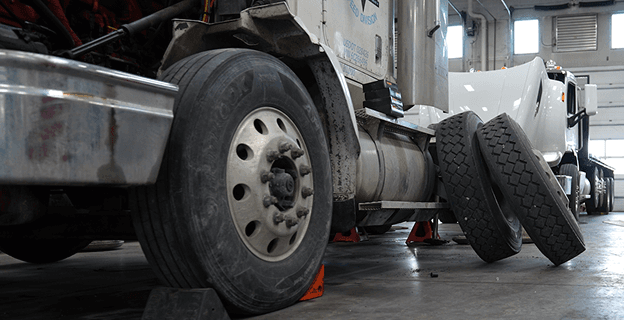3 Min Read • June 9, 2025
6 Service Department KPIs To Track for Heavy Truck Dealers

The saying goes: You can’t improve something if you don’t measure it. Service Managers can use key performance indicators as a way to measure goals and learn how well the Service department performs, its level of efficiency, and more.
Dealers often track dozens of metrics to gauge the health of their business. Here are six dealership Service department KPIs that should never be overlooked.
-
Repair Turnaround Time
Repair turnaround time is how long it takes a Technician to complete a repair successfully. Industry-standard repair times can be used as a benchmark for this KPI. Truck makers offer a variety of service literature, videos and other forms of assistance that Technicians can leverage to complete repairs properly and efficiently. Technician mentoring programs that pair seasoned Technicians with less experienced Techs can also help improve turnaround times.
-
Comeback Rate
The comeback rate measures how often a vehicle returns to the shop for the same problem. High-comeback rates are a sign that repairs aren’t being done correctly or Technicians haven’t found the root cause of the problem. Track comeback trends to identify the repairs your Technicians need additional training for.
-
Dwell Rate
Dwell rates measure how long it takes the Service department to diagnose and complete the needed repairs. Customers focus a great deal of attention on this KPI as it impacts their uptime. Many dealerships aim to diagnose trucks in two to four hours, but some have a quick Service bay for repairs that can be completed in less time to mitigate customers’ dwell-time concerns.
Accurately assess what’s wrong with the vehicle when it first comes into the shop to help set realistic repair time expectations. Thanks to telematics devices and sensors, manufacturers can now send dealers an initial diagnosis, suggested repair and a list of needed parts before the truck even arrives. This helps reduce dwell times and gets trucks in and out of the bay faster.
-
Technician Productivity
This KPI measures the percentage of time a Technician is productive. It’s calculated by dividing the number of hours a Technician is actively working by the total number of hours in their shift and then multiplying by 100. Technician productivity affects downtime and dwell time.
To improve productivity, ensure your Technicians have the proper tools, diagnostic equipment and online resources. Invest in ongoing Technician training so they have the skills to repair the latest technologies on new models.
-
Technician Proficiency
The Technician proficiency KPI compares your Technicians’ repair times to industry standards and can be calculated in two ways. One method is to look at the difference between how long your Technician took to complete the job and the industry standard for repair time.
Another method is to take a Technician’s comeback rate and divide it by their total billable hours. Technician proficiency information can be used when assigning repairs to specific Technicians since the Service Manager will know which types of repairs each Technician is best suited to handle.
-
Shop Profitability
This KPI evaluates your shop’s overall costs, including overhead, parts, wages and labor, and compares these costs to billable hours. This measurement allows the dealership to determine its profit margin on repairs. If profit margins are outside the expected limit, determine what’s causing the disparity. It could be an issue with parts pricing, Technician productivity or proficiency.
Not only is it a sound business practice to track internal KPIs, but it’s also valuable to benchmark against other Service providers. The Technology and Maintenance Council’s Vehicle Maintenance Reporting Standards is a universal coding language used across the trucking industry.
According to TMC, VMRS standards provide the necessary data for measuring labor productivity. Use them to reveal the relationship between direct and indirect labor, and to implement changes as needed. Parts-to-labor ratios can be established to provide the lowest overall maintenance costs.
Establish and track KPIs as a way to understand where your Service department excels and where there’s room for improvement.
Share This












































